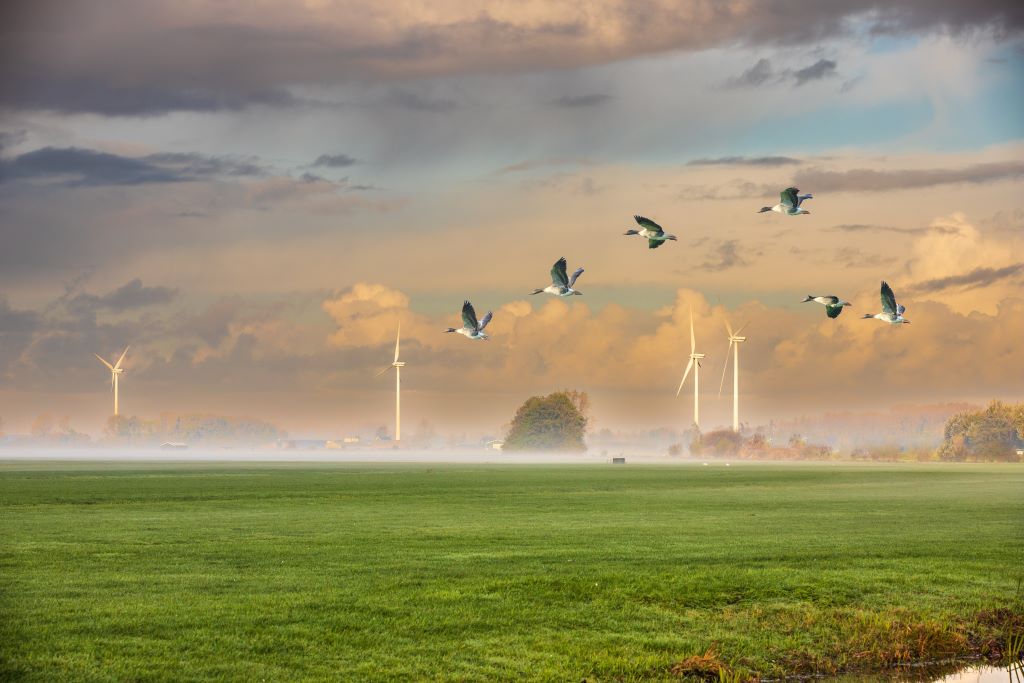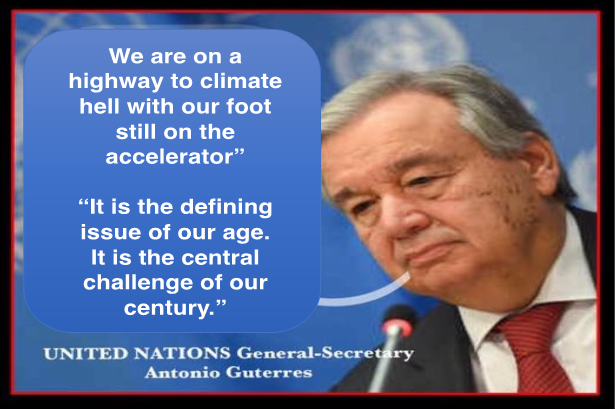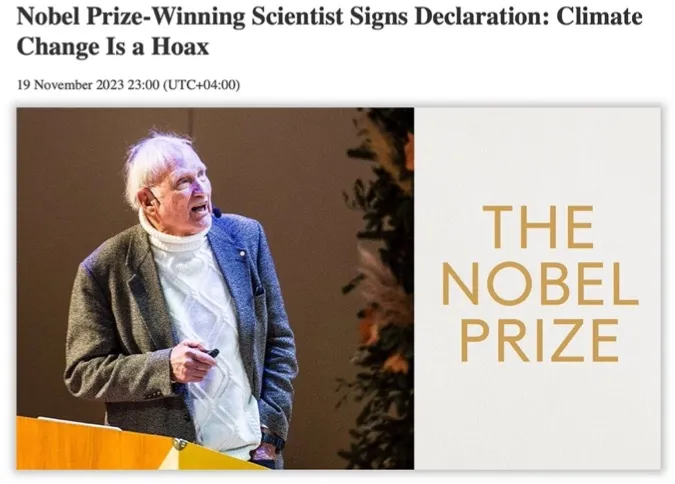Weighed down by fear and intimidation.

Source: shutterstock
By Guus Berkhout & Kees de Lange
There is no climate crisis, even if politicians, climate institutes, and the media would have you believe there is. Climate change is a fact, but it is a change as in everything changes, both inside and outside our atmosphere. No surprise! We will show that we should not turn climate change into a drama. On the contrary, we should take advantage of it. An encouraging message by emeritus professors Guus Berkhout and Kees de Lange.
In Part I, we urge politicians, climate researchers and journalists to stop fearmongering and stop citing results of flawed climate models. Our leaders must tell citizens the honest story.
By climate, we do not mean the fickle daily weather, but the average weather over a few decades (more than thirty years is the common definition). The climate represents an extraordinarily complex physical system and responds to all kinds of external influences from inside and outside our atmosphere. This has been happening for 4.5 billion years. We call these external influences the causes of climate change. The great scientific challenge is to know and understand the principal causes of past and present climate change. This scientific knowledge forms the basis of effective climate policy.
Mitigation and adaptation
If climate change can be shown to be dangerous, and the principal causes can be controlled by humans, then climate policy will have to focus on eliminating those causes. This is known as mitigation policy. But if humans are powerless against the dominant causes, then climate policy will have to focus on adaptation, the adaptation policy.
The drama begins when, for ideological reasons and/or dubious scientific research, mitigation is chosen, when adaptation is the correct route.
A critical look at the mainstream climate research as it has been conducted in recent decades, as well as a look at the geological history of the earth over 4.5 billion years, indicates that we are now heading in the wrong direction with our climate policy. As a result, we will spend hundreds of billions on policies that deliver nothing and do a lot of damage. That is exactly what experience has shown for decades.
Serious science
It is good to first recall how serious scientists do work. Science starts with making reliable observations. Today, satellites can collect an unimaginable number of valuable measurements about the properties of the climate system, such as temperature, pressure, and humidity. These observations tell the story of climate change. Hence, analysing those measurements is the first big step. This analysis yields important empirical relationships, such as temperature as a function of space (x, y, z) and time (t). The analysis also reveals relationships between system properties, such as between temperature and humidity. These relationships are empirical because they are derived directly from measurements and involve no theoretical foundation.

Illustration 1: Over the centuries we have seen that people with new ideas, even if they were based on reliable observations, have been silenced. It is sad that this phenomenon is still flourishing in the 21st century.
Explaining Observations
Then the second scientific phase begins: provide a scientific explanation of why the observations are the way they are. This is done through the development of theories, in which computer models play an important role in modern times. If a computer model can reproduce all relevant observations – and therefore all empirical relationships – we are on the right track with the theory. If that is not the case, all that remains for the theory is the wastepaper basket.
This is a ruthless test. Precisely this tough approach has brought natural science to its current level in just a few hundred years, since the work of prominent scientists such as Galileo Galilei (see illustration 1). Selling a theory or model by selecting only observations that are convenient is scientifically a mortal sin. Changing measurements to ensure that those measurements match model results is scientific fraud. Universities should teach their students these basic principles of science.
Reliable observations
So, everything starts with making reliable observations. That’s no mean feat! Astronomy is a good example. What is happening in the Universe is so complex that only the very best telescopes can provide humans with reliable observations that will help us understand all the wonderful things that are happening in outer space. The successor to the Hubble telescope, the James Webb telescope, produces images that amaze us every day. These images enable man to reject old assumptions and bring existing models of the origin of the universe closer to the truth.
Temperature measurements
Back to Earth’s climate. Temperature measurements are of great importance in climate research. Simple, you would say, you stick weather stations with thermometers in the ground and archive the results in a spreadsheet every day. This has indeed been the case in the past, but the question is: ‘Are these results reliable and representative?’ If only that were true. Scientific professionalism is also needed when it comes to measuring.
First of all, the surface of the planet is 70% water, so you don’t place a weather station in the ground in the oceans. Also, in the past, measuring stations were scarce, and some parts of the earth were much better covered than others. Moreover, measuring stations that used to be in the middle of nowhere are now in the suburbs of large cities, or right next to a factory or an airport, due to increasing urbanization. Due to the so-called Urban Island Effect, these locations are far from ideal. It was only slightly more than forty years ago that satellite measurements made it possible to measure the temperature worldwide in a way that is much more consistent, reliable, and representative.
Climate models and satellite measurements
The climate models have been telling us for many decades that Earth is warming to alarmingly high temperatures and that the CO2 gas is the main culprit. UN chief António Guterres puts it this way: “We are on a highway to climate hell” if we don’t stop emitting the ‘evil’ CO2 gas. It is also popular to add to this statement that 97% of the scientists agree. However, is that story true?

Illustration 2: UN boss Antonio Guterres warns the global community, “We are on a highway to climate hell” if humans do not stop emitting the evil CO2-gas.
Nonsensical scenarios
Even worse, to reinforce that panicky message from UN chief Guterres, nonsensical scenarios are used that are impossible in practice. For example, the infamous RCP 8.5 scenario was put into the climate models (an extreme CO2 emission scenario) to scare people on a large scale. That scenario, which predicts a warming of more than 60C by 2100, is still used today, while it is well known that these predictions are based on nonsensical assumptions.
CO2-contribution
And 100% of scientists also agree that more CO2 contributes to warming, but only a minority really thinks that human CO2 is the dominant cause of current warming. That, too, is borne out by hard facts. In the first place, in the history of the Earth’s climate (long before there were humans) we see that there were periods with high CO2-concentrations and low temperatures, as well as periods with low CO2-concentrations and high temperatures. So, there were other causes at play, which had a major impact on the Earth’s temperature.
Saturation effect
But even more interesting are the modern satellite measurements that show that with more CO2 emissions there is a saturation effect, as we so often see in nature. The more CO2, the less the effect on temperature. The linear behaviour in the climate models does not correspond to reality. This partly explains the panicky predictions made by these models. A word for the connoisseurs about this. Le Chatelier’s law states that nature always strives to counteract disturbances (‘negative feedback’). This law explains, for example, that in climate history, glacial and interglacial periods have always remained within certain temperature limits, regardless of the CO2-concentration in the atmosphere.

Illustration 3: Nobel Laureate Dr. John Clauser, signatory of the Clintel’s World Climate Declaration, puts it this way: “Truth has the property of being in accord with reality and good science means observing reality in nature and reporting it accurately with no thought to the consequences.”
Molecule of life
In that light, we would like to say a few extra words about CO2. Laboratory measurements indicate that more CO2 does have a warming effect, but those measurements also indicate that this warming is modest and nonlinear. So, there is therefore no, we repeat no scientific evidence whatsoever for all those AGW scare stories. Moreover, measurements also show that CO2 is the molecule of life for all nature on Earth. The more CO2, the greener Earth becomes and the higher agriculture productivity becomes. If we compare both CO2 properties, nonlinear warming, and agricultural productivity, then the extremely expensive and disruptive “net-zero” climate policy being pursued is scientifically, economically, and socially irresponsible.
Cause and effect
Finally, the question of cause and effect in complex systems is one of the most difficult problems in science. For instance, there are also scientific indications that the warming of oceans causes more CO2 to be released into the atmosphere (Henry’s Law). So not only humans, but also nature influences the amount of CO2 in the atmosphere. The complete story should be taught in all schools. Not just the well-known fear story, but the complete story should be told. Why are our children so one-sidedly informed about climate?
Cooperation
The Intergovernmental Panel on Climate Change (IPCC) tells us an overly simplistic and alarmist story about climate change. In that story, anthropogenic CO2 is pointed out as the main cause (‘Science is settled‘). The consequence of this rigid statement is that a rapid phasing out of the use of fossil fuels is required. However, technical and economic realities will not allow this.
Apart from the practical impossibility, there are the scientific arguments. We have shown above that there are many indications that there is much more going on than anthropogenic CO2 (‘The science is not settled at all‘). We still know far too little about Earth’s climate to claim that humans can control it.
An appeal is made to both climate science worlds, alarmists and realists, stop fighting each other, and jointly build up more scientific knowledge about how climate changes, and do it more quickly. Here, reliable measurements should guide us. It is the only way to get closer to the truth with climate models.
In part II we will argue that we should work together on the opportunities that climate change offers, both scientifically, technologically, and economically. Mind you, a completely different approach to climate policy also means a completely different approach to the energy transition. The benefits will be large for everyone.
